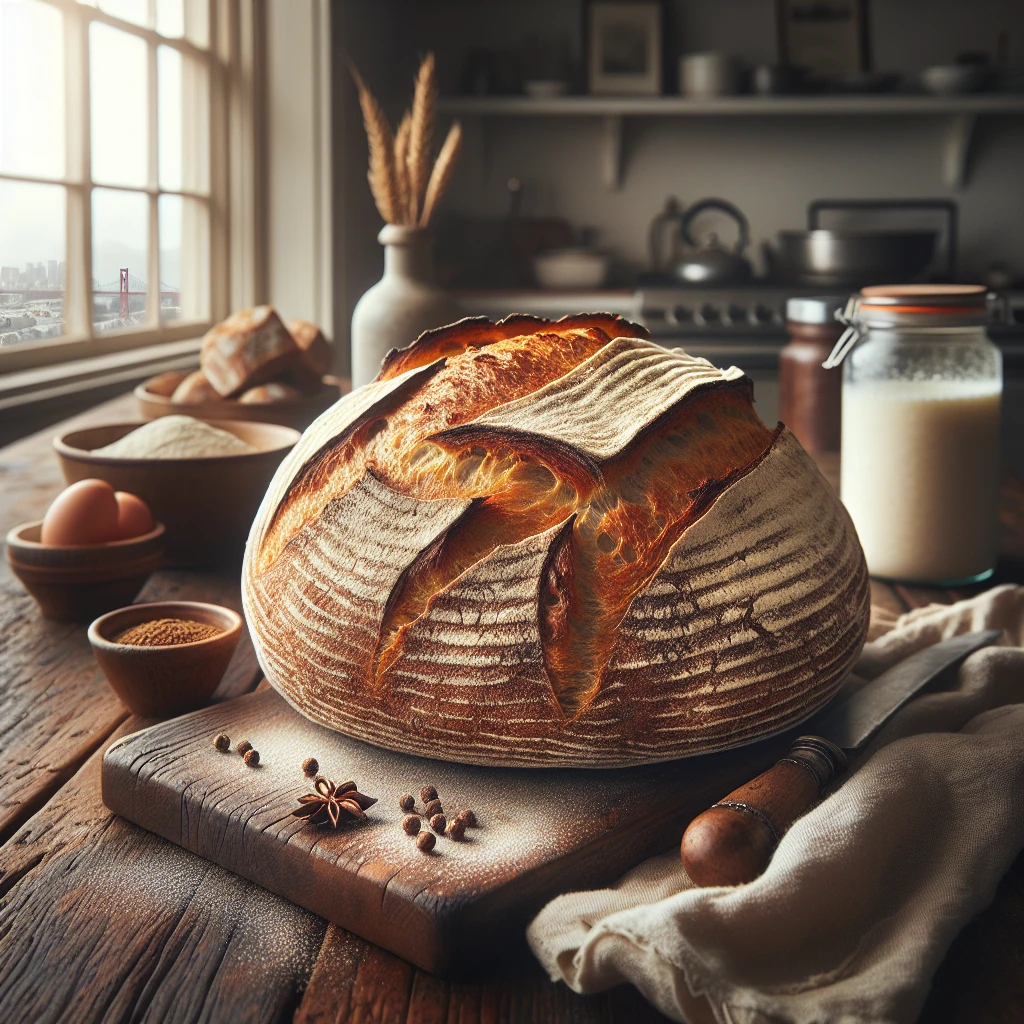
Golden Gate Sourdough Bread is a delightful nod to the iconic San Francisco sourdough, known for its tangy, chewy crumb and crispy crust. This recipe is perfect for those who cherish the art of bread-making and want to experience the joy of a homemade loaf that's rich with flavor and history.
Flour: We use all-purpose flour for a balanced texture that gives the bread its signature chewiness. Feel free to experiment with bread flour for a slightly different texture.
Water: Room temperature water helps activate the sourdough starter gently, ensuring a nice rise during fermentation.
Sourdough starter: This is the heart of the bread, lending its tangy flavor and natural leavening. Make sure your starter is ripe and bubbly for the best results.
Sea salt: Enhances the flavor of the bread, balancing the sourness of the starter. Don't skip it!
Cornmeal: Used for dusting, it prevents the loaf from sticking to the baking surface and adds a subtle crunch to the crust.
This sourdough is a perfect companion to creamy soups or stews. It's equally delightful when toasted and topped with avocado or a smear of good butter and a sprinkle of flaky sea salt.
Start by mixing the flour and water in a large bowl. Use your hands or a sturdy spatula to combine them until no dry flour remains. This step, called autolyse, allows the flour to absorb water and start gluten development. Cover the bowl with a towel and let it rest for 30 minutes.
After resting, add the sourdough starter and sea salt. Mix well by hand, pinching and folding the dough until it becomes smooth and elastic. This might take about 5-7 minutes of gentle kneading. Once combined, cover the bowl again and let the dough rise at room temperature for 3-4 hours.
During this rise, you'll perform a series of stretch and folds every 30 minutes. To do this, wet your hands, then gently stretch the dough from one side and fold it over itself. Rotate the bowl a quarter turn and repeat until you've gone around the bowl. This technique strengthens the dough.
After the dough has doubled in size, turn it out onto a lightly floured surface. Shape it into a round loaf by folding the edges into the center, then flip it over and tuck the sides under to create tension on the surface. Place the shaped loaf on a cornmeal-dusted baking sheet.
Cover the loaf with a towel and let it rise for another 2-3 hours at room temperature. It should appear puffy and slightly risen, not necessarily doubled.
Preheat your oven to 450°F (232°C) and place a baking stone or an inverted baking sheet inside to heat up. Just before baking, score the top of the loaf with a sharp blade to allow it to expand in the oven.
Carefully transfer the loaf onto the hot stone or sheet. Bake for 20 minutes, then reduce the oven temperature to 425°F (218°C) and continue baking for another 25 minutes. The loaf should be golden brown with a firm crust.
Remove the bread from the oven and let it cool completely on a wire rack before slicing. This cooling period allows the crumb to set properly.